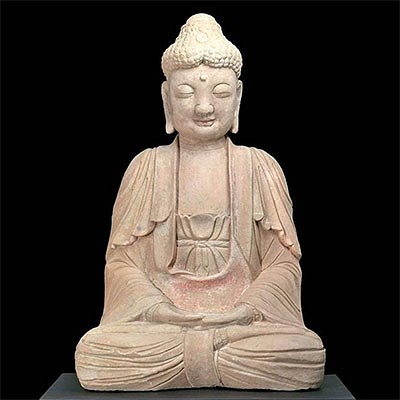Mississippian Bi-chrome Pottery Jar w/ TL
Lot 132
About Seller
Artemis Fine Arts
686 S Taylor Ave, Ste 106
Louisville, CO 80027
United States
Selling antiquities, ancient and ethnographic art online since 1993, Artemis Gallery specializes in Classical Antiquities (Egyptian, Greek, Roman, Near Eastern), Asian, Pre-Columbian, African / Tribal / Oceanographic art. Our extensive inventory includes pottery, stone, metal, wood, glass and textil...Read more
Categories
Estimate:
$12,000 - $18,000
Absentee vs Live bid
Two ways to bid:
- Leave a max absentee bid and the platform will bid on your behalf up to your maximum bid during the live auction.
- Bid live during the auction and your bids will be submitted real-time to the auctioneer.
Bid Increments
| Price | Bid Increment |
|---|---|
| $0 | $25 |
| $300 | $50 |
| $1,000 | $100 |
| $2,000 | $250 |
| $5,000 | $500 |
| $10,000 | $1,000 |
| $20,000 | $2,500 |
| $50,000 | $5,000 |
| $100,000 | $10,000 |
| $200,000 | $20,000 |
About Auction
By Artemis Fine Arts
Feb 18, 2021
Set Reminder
2021-02-18 10:00:00
2021-02-18 10:00:00
America/New_York
Bidsquare
Bidsquare : Exceptional Antiquities, Asian, Ethnographic
https://www.bidsquare.com/auctions/artemis-gallery/exceptional-antiquities-asian-ethnographic-6373
Museum-worthy examples of Egyptian, Greek, Roman, Etruscan, Near Eastern, Far East / Asian, Pre-Columbian, African / Tribal, Oceanic, Native American, Spanish Colonial, Russian, Fossils, Ancient Jewelry, Fine Art, so much more! Artemis Fine Arts info@artemisfinearts.com
Museum-worthy examples of Egyptian, Greek, Roman, Etruscan, Near Eastern, Far East / Asian, Pre-Columbian, African / Tribal, Oceanic, Native American, Spanish Colonial, Russian, Fossils, Ancient Jewelry, Fine Art, so much more! Artemis Fine Arts info@artemisfinearts.com
- Lot Description
Native American, North America, West of Mississippi River (modern day Arkansas), Quapaw culture, ca. 1500 CE. An elegant bichrome pottery vessel with a near-spherical body and a tubular neck that rises above, all upon a raised discoid foot. The colorful decorative program is characteristic of Quapaw pottery, with alternating red and cream bands spiraling around the exterior walls and red and cream stepped pyramidal motifs adorning the neck. The Quapaw were Native Americans who lived in four villages along the Mississippi River in what is now Arkansas from ca. 1500 through the seventeenth and eighteenth centuries. The tribe was divided into two large moieties (divisions) - Earth and Sky - and twenty-one clans. Elegantly hand-built and brilliantly hued ceramics like this example are some of their most lasting artistic achievements. Size: 7.75" W x 9.375" H (19.7 cm x 23.8 cm)
According to the Museum of Native American History (MONAH), "The artistic design that went into decorating these pottery vessels varied by region, but nowhere had it surpassed the expert craftsmanship and artistic design that was found by the inhabitants that lived in the area now known as modern day Arkansas. The Arkansas area was occupied by three major groups during this period: the Caddo in the southwest, the Quapaw along the lower Arkansas River, and a group simply called the Mississippians in the northeast."
This piece has been tested using thermoluminescence (TL) analysis and has been found to be ancient and/or of the period stated. A full report will accompany purchase.
Provenance: private Kansas City, Missouri, USA collection, ex-John Townsend collection, formed in the 1970s and earlier
All items legal to buy/sell under U.S. Statute covering cultural patrimony Code 2600, CHAPTER 14, and are guaranteed to be as described or your money back.
A Certificate of Authenticity will accompany all winning bids.
We ship worldwide and handle all shipping in-house for your convenience.
#161638Chips to rim and periphery of base. Expected surface wear with nicks, abraded areas, and some pigment loss, though much remains. Some impressions from tools used to handle vessel when wet or leather hard. TL holes on bottom and inside rim.Condition
- Shipping Info
-
All shipping is handled in-house for your convenience. Your invoice from Artemis Gallery will include shipping calculation instructions. If in doubt, please inquire BEFORE bidding for estimated shipping costs for individual items.
-
- Buyer's Premium



 EUR
EUR CAD
CAD AUD
AUD GBP
GBP MXN
MXN HKD
HKD CNY
CNY MYR
MYR SEK
SEK SGD
SGD CHF
CHF THB
THB
















